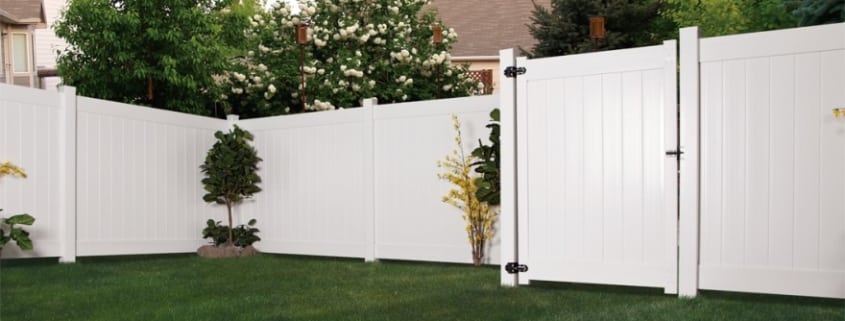
The Real Deal about Fence Maintenance
All fences require maintenance, it’s just a matter of how much. Be wary of anyone who claims that their products are “maintenance free” as this type of claim is overselling the capabilities of the product and misleading. Ultimately, Mother Nature wins and you will need to do something to your fence at some point.
There are three main factors to consider in how much fence maintenance is likely required:
- Engineering and Design of the product
- Environmental Conditions
- Quality of the installation
Engineering and Design of the Fence
New technologies in materials and coatings have improved the life and maintenance requirements of many fencing products across the board. UV protection innovations over the last decade have extended the useful life in powder coated products such as Nobility Ornamental Aluminum Fences. In vinyl fences, the addition of color stabilizers in the chemical makeup of PVC have slowed the effects of the sun. Other engineering factors include the strength and durability of the fencing materials used as well as any geometric designs that reduce the need for maintenance due to gravity or impact from a foreign object.
Fencing Environmental Conditions
The environmental conditions at the location of the fence can play a large role in how much maintenance is required. If your vinyl fence is in a shaded, moist area, it is more susceptible to mold and algae than a fence in a sunny, dry area. Conversely, an aluminum fence located in the sun will experience more UV rays that will fade or “gray out” the color of the fence.
Quality of the Fence Installation
Just as all products are not equal, not all fence installations are equal. You must make sure the post holes are below the frost line and that the installer wet mixes the cement. For vinyl fences, frost can heave the post in the concrete. One way to lessen this probability is to have at least one hole at the bottom of the post to allow concrete to flow into the inside of the post at the bottom of the post hole. In addition, fill the inside of the post up to ground level with the dirt from the hole that was just dug. This prevents direct contact of the interior of the fence post below grade with the outside air temperature. The last thing you want is to have fence posts going up and down your new fence after the first winter. This causes a lot of expensive repair to make it look good again.
Realistically, many fences are relatively low maintenance depending on what your expectations are. If you expect your fence to be in “factory condition” for the life of the fence, you will have more maintenance than another person who is ok with some changes caused by the environment. The real consideration is how long will the product look and perform to your expectations and this is determined by the three main factors outlined above.
